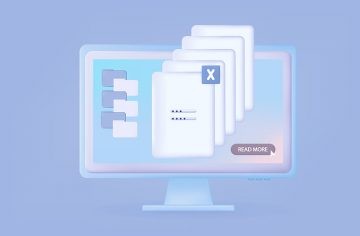TechShack Mac Adware

While examining TechShack, it has come to our attention that its primary purpose is to present intrusive advertisements. Applications that operate in a similar manner to TechShack fall into the adware category. It's crucial to emphasize that users often inadvertently install such applications on their computers.
One notable characteristic of TechShack is its capability to display ads in various formats, including pop-ups, banners, in-text ads, and even full-screen ads. These advertisements can manifest on the user's desktop, web browsers, or within other applications, causing disruptions to the user's online experience and potentially leading to frustration.
The ads presented by TechShack have the potential to direct users to untrustworthy or malicious websites. These ads may steer users towards counterfeit software download sites, where users might unknowingly download malicious software or other undesired programs. Some advertisements might also redirect users to phishing websites, which aim to deceive users into divulging sensitive information.
Furthermore, TechShack's ads might lead users to pages offering misleading deals or products that fail to deliver as promised, potentially resulting in financial losses or disappointment. It's also plausible that clicking on these ads could trigger unexpected downloads and installations. Consequently, it is advisable for users not to place trust in advertisements originating from apps like TechShack.
How is Adware Commonly Distrubuted?
Adware is commonly distributed through various methods, often taking advantage of user behavior or vulnerabilities. Here are some common ways adware is distributed:
- Bundled Software: Adware is frequently bundled with free or seemingly legitimate software applications. When users download and install these applications, they may unknowingly install adware along with them. This is often mentioned in the software's terms and conditions, but users tend to overlook or ignore these disclosures.
- Malicious Websites: Visiting malicious or compromised websites can lead to adware installations. These websites may use deceptive tactics to convince visitors to click on pop-ups or download files that contain adware.
- Phishing Emails and Spam: Adware can be distributed through phishing emails and spam messages. These emails may contain links or attachments that, when clicked, lead to the installation of adware on the recipient's device.
- Peer-to-Peer (P2P) File Sharing: Downloading files through P2P networks, torrents, or file-sharing platforms can expose users to adware. Unverified or pirated software and media files are often carriers of adware.
- Fake Updates: Adware can disguise itself as software updates or security patches. Users may be prompted to download and install these fake updates, inadvertently installing adware in the process.
- Drive-By Downloads: Some websites are designed to automatically download and install adware onto a user's device without their consent. This can occur if your browser or software has unpatched vulnerabilities.
- Freeware and Shareware: Free software and shareware applications may include adware as part of their revenue model. Users who install these programs may encounter ad-supported features or advertisements within the software.








